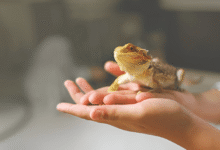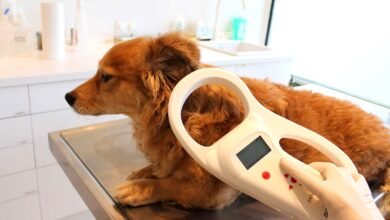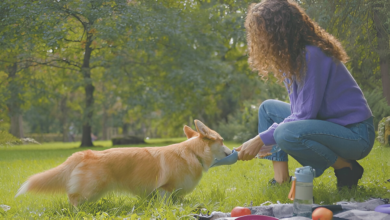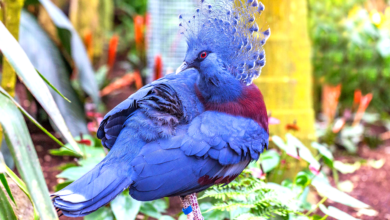
How to Remove Pet Hair from Home Surfaces: Cleaning Tips
Learn how to remove pet hair from sofas, carpets, beds, and more with easy tips, tools, and DIY solutions to keep your home clean and allergen-free.
Pets bring joy and warmth into our homes, but they also come with a common challenge—pet hair on sofas, floors, beds, and other surfaces. From chairs and sofas to carpets, curtains, beds, and even countertops, fur seems to find its way everywhere.
Pet hair isn’t just a cosmetic issue—it can trigger allergies, reduce indoor air quality, and make your home look messy. Fortunately, removing pet hair doesn’t have to be difficult. With the right strategies, tools, and routines, you can keep your home clean while keeping your pets happy
In this guide, we’ll show you how to remove pet hair from home surfaces efficiently, including daily cleaning tips, tools, DIY solutions, and prevention methods for all areas of your home.
Why Pet Hair Sticks to Home Surfaces (H2)
Pet hair clings to different areas of the home because of static electricity, surface texture, and frequent pet contact. Knowing these reasons makes it easier to choose the right cleaning method:
- Fabric furniture (sofas, chairs, cushions): Hair gets trapped deep in the fabric fibers.
- Carpets and rugs: Loose hair sinks into the pile if not cleaned regularly.
- Curtains and blinds: Light fabrics attract hair easily, especially near spots where pets rest.
- Hard surfaces (wood, tile, counters): These don’t trap hair, but static and airflow can still make hair cling.
- Beds and pet beds: Hair builds up quickly as pets lounge or sleep.
Understanding why hair sticks helps you choose the most effective removal techniques for each surface type.
Best Fabrics for Pet Owners (H2)
Choosing the right fabric helps control pet hair. Soft fabrics like velvet, corduroy, or wool attract hair easily and are harder to clean. For sofas, chairs, or bedding, synthetic or smooth-finish fabrics work best.
Leather, satin, and microfiber may still get hair, but it’s much easier to remove. Regular vacuuming, using a lint roller, and a light anti-static spray keep these fabrics clean.
Recommendation: For pet owners, microfiber or leather is generally the best choice. They resist hair, are easy to clean, and stay looking neat for longer.
Safety Tips While Cleaning (H2)
- Avoid harsh chemicals or bleach; pets may ingest residues.
- Always use pet-safe cleaning products.
- Ensure proper ventilation during vacuuming or spraying.
- Supervise pets while cleaning to avoid accidents.
Daily Cleaning Tips for Home Surfaces (H2)
Consistency is key to minimizing hair buildup. Small daily habits prevent long-term frustration:
- Vacuum Regularly: Use pet hair attachments on carpets, rugs, and furniture for best results.
- Spot Cleaning: Lint rollers or slightly damp microfiber cloths quickly remove hair from chairs, cushions, and beds.
- Shake or Beat Rugs and Cushions: This loosens trapped hair before it settles further.
- Groom Your Pet Daily: Regular brushing reduces shedding significantly.
- Keep Pet Areas Organized: Limit hair spread by designating pet beds and preferred lounging spots.
Daily attention prevents hair from becoming unmanageable and reduces the need for deep cleaning sessions.
Tools for Removing Pet Hair from Home Surfaces (H2)
Vacuum Cleaners (H3)
A vacuum designed for pet hair makes cleaning furniture, carpets, and floors faster and more effective. Models like the Dyson V7 work well on sofas, rugs, hardwood floors, and even stairs. Using attachments such as upholstery brushes and slim nozzles helps reach corners, edges, and tight spaces, ensuring hair is removed completely.
Best Use: Sofas, chairs, cushions, carpets, rugs, hardwood or tile floors, stairs. Powerful suction and attachments (upholstery brush, crevice tool) remove hair completely, reaching corners, edges, and tight spots.
Lint Rollers (H3)
Affordable and quick, lint rollers are perfect for sofas, chairs, and curtains. Keep one handy for daily touch-ups.
Best Use: Sofas, chairs, curtains, and small areas for quick touch-ups. Easy to use, inexpensive, and perfect for picking up loose hair daily.
Rubber Gloves (H3)
A slightly damp rubber glove rubbed across fabric, carpets, or curtains attracts hair into clumps for easy removal.
Best Use: Sofas, carpets, cushions, and curtains where hair clumps together. Slightly damp gloves gather hair into clumps for easy removal and fast results.
Microfiber Cloths (H3)
Damp microfiber cloths are effective on hard surfaces, glass, and smooth furniture. They attract hair without scratching surfaces.
Best Use: Hard surfaces, glass, smooth furniture, and countertops. Damp microfiber cloths attract hair without scratching surfaces and reduce static.
Pet Hair Removal Brushes (H3)
Reusable brushes with rubber bristles work well on all fabric surfaces, including furniture, curtains, and pet beds.
Best Use: Sofas, chairs, cushions, furniture, curtains, and pet beds. Rubber bristles reach deep into fibers, lift stubborn hair, are reusable, and are eco-friendly.
DIY Solutions for Pet Hair Removal (H2)
Removing pet hair doesn’t always require special tools—simple household items work just as well. These DIY methods are safe, affordable, and effective for quick cleaning:
- Damp Sponge for Pet Hair: Gently rub on cushions, blinds, or soft surfaces to lift fur.
- Dryer Sheets: Reduce static and loosen hair from fabric surfaces.
- Sticky Tape: Wrap tape around your hand and dab on hair-covered areas to pick up loose fur.
- Fabric Softener Spray: Mix a teaspoon of fabric softener with water, mist lightly on surfaces, and wipe with a cloth to remove stubborn hair.
Surface-Specific Pet Hair Cleaning (H2)
Pets bring warmth to our homes, but their hair can stick everywhere—from carpets to cushions. Each surface holds fur differently, so cleaning methods need to vary. With the right tools and simple habits, removing pet hair can be quick and easy, keeping your home fresh, comfortable, and pet-friendly.
Furniture (Sofas, Chairs, Cushions) (H3)
Furniture—including sofas, chairs, ottomans, and cushions—is a hotspot for pet hair. Hair sticks easily, but a few simple methods make cleaning quick and effective:
- Vacuum thoroughly: Use an upholstery attachment to clean corners, crevices, and seams. Works on sofas, chairs, and cushions alike.
- Quick touch-ups: Lint rollers or slightly damp rubber gloves grab loose hair fast.
- Protect surfaces: Washable throws or slipcovers catch fur and are easy to wash.
- Spot cleaning: Lightly dampened microfiber cloths help lift stubborn hair from chairs and cushions.
- Shake cushions: Take cushions outdoors and shake to remove trapped hair.
- Use a rubber bristle brush: Perfect for deep fibers or stubborn fur inside cushions.
- Groom your pet: Brushing pets regularly reduces shedding and keeps hair off furniture.
Carpets and Rugs (H3)
- Vacuum at least three times a week.
- Use a damp rubber broom or microfiber mop to lift embedded hair.
- Shake or beat rugs outdoors if possible.
Curtains and Blinds (H3)
- Shake lightly to remove hair.
- Use a lint roller for quick touch-ups.
- Regular vacuuming with a brush attachment helps maintain clean fabric.
Hardwood and Tile Floors (H3)
- Sweep or vacuum daily.
- Use a microfiber mop to attract remaining hair.
- Avoid excessive water on hardwood; a slightly damp cloth is sufficient.
Beds and Pet Beds (H3)
- Wash covers weekly.
- Use vacuum attachments for mattresses and pet beds.
- Groom pets before bedtime to reduce hair accumulation.
Tables and Countertops (H3)
- Wipe with a damp microfiber cloth or use static-attracting wipes.
- Minimize pet access to high-use surfaces.
Quick Tips for All Surfaces (H2)
Following a few simple habits makes it easier to keep your home free of pet hair. Daily brushing reduces shedding and prevents hair from spreading on furniture and floors. Using a mix of cleaning tools—like vacuums, lint rollers, rubber gloves, or microfiber cloths—makes hair removal faster and more effective. Always stick to pet-safe sprays and avoid harsh chemicals that could harm your furry friends. Finally, consider using an air purifier to capture airborne hair and dander, improving indoor air quality while keeping surfaces cleaner.
Simple Ways to Keep Your Home Free of Pet Hair (H2)
Preventing hair buildup is easier than it seems. Try these simple tips to keep your home clean, fresh, and comfortable:
- Cover Furniture: Washable throws, blankets, and slipcovers trap hair.
- Daily Grooming: Brushing pets reduces shedding.
- Air Purifiers: Capture airborne dander and hair.
- Designated Pet Areas: Encourage pets to use beds instead of furniture.
- Training: Train pets to avoid specific surfaces.
Expert Advice and Studies (H2)
According to the American College of Allergy, Asthma & Immunology, pet dander is a leading cause of household allergies. Regular cleaning, grooming, and using air purifiers reduce allergic reactions significantly.
Experts recommend vacuuming furniture, carpets, and rugs at least three times a week in homes with heavy-shedding pets. Routine care is more effective than occasional deep cleaning.
Conclusion (H2)
Living with pets means living with fur, but it doesn’t have to dominate your home. By understanding why hair sticks to various home surfaces, using the right tools, applying home solutions, and practicing prevention, you can maintain a clean, healthy living environment.
Daily cleaning routines, grooming, and smart strategies make it easy to enjoy your pets and a fur-free home. Mastering how to remove pet hair from home surfaces ensures comfort, hygiene, and peace of mind for both you and your pets.
FAQ
Which fabrics are best for pet owners? (H3)
Microfiber and leather are generally the best. They resist hair, are easy to clean, and stay looking neat.
How often should I vacuum to control pet hair? (H3)
For heavy-shedding pets, vacuum furniture, carpets, and rugs at least 3 times a week.
Can I remove pet hair without a vacuum? (H3)
Yes. Lint rollers, damp rubber gloves, microfiber cloths, dryer sheets, and sticky tape work well on different surfaces.
How can I prevent pet hair from spreading in the house? (H3)
Regular grooming, designated pet areas, washable covers, and air purifiers help reduce hair spread.
Are pet-safe cleaning products necessary? (H3)
Yes. Always use pet-safe sprays and avoid harsh chemicals to protect your pets.







